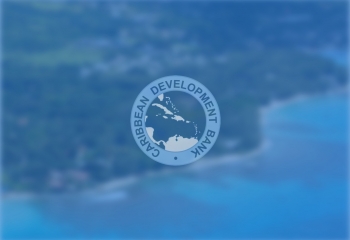For many years, residents of the Belize River Valley depended primarily on the Belize River as their main water source. Women would spend long hours by its banks, washing and drying their laundry, and children would have to help ferry water from the river to their homes, all before the start of school. Alternative water sources included creeks, and hand-dug wells, while rainwater catchments and bottled water were the primary sources for drinking water.
In 2015, this situation changed for approximately 2,000 residents of the Belize River Valley. A project funded by the Caribbean Development Bank (CDB), and implemented by the Belize Water Services (BWS) in partnership with the Government of Belize, has brought running, potable water to the community’s households.
Yvonne Hyde, CEO, Ministry of Economic Development, Belize says that improving access to basic services in Belize’s rural areas has been one of the Government’s priorities.
“It was felt that in providing potable water to these nine villages in a rather remote area of the country that the populations would benefit significantly, both in terms of their quality of life and being able to better withstand the threats from health related problems,” she said.
The nine villages that make up the Belize River Valley bear names that reflect the logging history of the region – Buttercup, Burrell Boom, Flowers Bank, Scotland Halfmoon, Bermudian Landing, Isabella Bank, Lemonal, Double Head Cabbage, St. Pauls Bank, Willows Bank and Rancho Delores. Key economic activities include small-scale agricultural production, eco-tourism and retail trade, although many residents travel to Belize City for work. An improved water supply is expected to enhance these activities, providing for the growth of the agro-industry, as well as encouraging tourism in the area.
Prior to the implementation of the Belize River Valley Rural Water System, during long periods without rain, wells and creeks would dry up, and water from the hand pumps would be brown and taste of mud, residents recall. Some schools had to rely on a single basin of water for the students to wash their hands.
“Before the BWS water came into existence, well we really had problems. If we don’t have a vat, or let’s say a water tank, we would have to drink water from a well and we would have to be pulling that water from a well, of course you won’t have a well right around your house, we have it a little distance, so we had to pull it for washing, for doing the dishes, stuff like that, for bathing,” said resident, Juanita Banner.

Tony Anthony, who also lives in the River Valley, described how having potable water has made a big difference when it comes to taking care of his livestock.
“I got a hog pen, with about 48 hogs, and I used to go at a hole in the spring, and that’s a lot of buckets of water, every morning I had to get 50 buckets to really maintain those hogs, and I give the hogs water three times a day,” said Anthony.

As part of the project, three water storage facilities and booster stations were constructed, one each at Scotland Halfmoon, Lemonal and Rancho Dolores. The systems are built to operate independently, so that damage to any of the water plants will not affect the other systems. In addition, the system allows for fire-fighting, especially in communities such as Double Head Cabbage and Willows Bank where bush fires are common occurrence in the dry season.

Three persons from the community are now permanently employed with the BWS, and are responsible for maintaining and monitoring the system. In addition, in an area where residents depend on eco-tourism and agriculture, the water project has made these activities more viable.
“At our count, 641 households benefitted directly by connecting, we have also allowed for the potential for significant business development in the area, especially given the growth of small tourism-type properties. That area is actually known for tourism, and of course we’ve beefed up the connections for schools which is important in that community as well,” said Alvan Haynes, Chief Executive Officer, BWS.
The successful completion of the Belize River Valley Rural Water System Project means that now, when residents make trips to the river, they are for purely recreational reasons. Laundry can be done at home, and they no longer have to carve out time in their day to collect water.
The project has helped to contribute to the Government of Belize’s goal of providing universal access to potable water by 2020. CDB invested USD3.5 million, with the Government of Belize and the BWS providing counterpart funding of USD404,000 and USD100,000 respectively.
